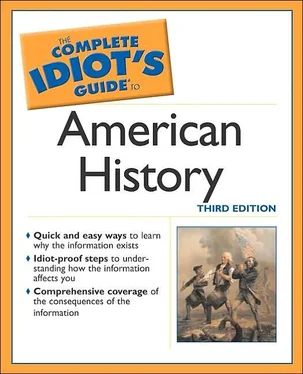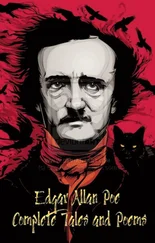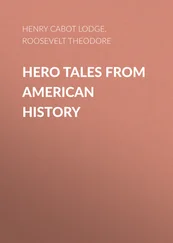These pioneers made their way into the territory by way of the southwestern deserts until 1, 833, when Joe Walker, a mountain man from Tennessee, marched due west from Missouri. Walker took the so-called South Pass through the Great Divide, went east to west across the Great Basin, climbed the Sierra Nevada Mountains, and entered California. This path became the California fork of what would be called the Overland Trail. Walker had opened California to the rest of the nation. By 1840, 117 mountain men were settled in Mexican California, bringing the American population to about 400.
The mountain men and other explorers carried back to the East tales of the wondrous and potentially bountiful lands that lay toward the sunset. Through the decade of the 1830s, America’s westering dreams simmered. At last, on February 1, 1841, 58 men—settlers living in Jackson County, Missouri—met at the town of Independence to plan the first fully organized emigrant wagon train to California. Assembling across the Missouri River, at Sapling Grove, the party had grown to 69—including more than 20 women and children—under the leadership of John Bartleson. The prominent Catholic missionary Father Pierre-Jean deSmet and the mountain man Thomas Fitzpatrick also joined the train of 15 wagons and four carts.
The trek consumed five months, three weeks, and four days. It was marked by a single death, a single birth, and a single marriage. The following year, some 20 wagons carrying well over 100 persons made the trip. Other journeys followed each year thereafter until the completion of the transcontinental railroad in 1869 made the Overland Trail and the other trans-West routes obsolete.
Surviving the three-to seven-month journey across an often brutal and always unforgiving landscape took discipline, strength, and luck, Yet most who undertook the trek survived—albeit transformed by the ordeal: haggard, even reduced to skin and bones. Such hardship was sufficient to convince many emigrants to make an expensive and often stormy journey by sea—either all the way around Cape Horn at the tip of South America or to the Isthmus of Panama. No such thing as a Panama Canal existed in the 19th century (the canal would not be completed and opened to traffic until 1914). Therefore, travelers bound for the West Coast had to disembark on the Atlantic side, make a disease-ridden overland journey across the steaming jungles of the Isthmus, then board a California-bound ship on the Pacific side.
Until gold was discovered in California in 1848-49, Oregon was the strongest of the magnets drawing emigrants westward. In 1843, a zealous missionary named Marcus Whitman led 120 wagons with 200 families in what was called the Great Migration to Oregon. Soon, stories of a lush agricultural paradise touched off “Oregon fever,” which brought many more settlers into the Northwest.
Oregon was a hard “paradise.” The elements could be brutal, and disease ranged from endemic to epidemic. Whitman worked tirelessly as a missionary and physician to the Cayuse Indians in the vicinity of Walla Walla (in present-day Washington state). An overbearing man who insisted that the Indians accept none other but the Christian God (and his version of that God), Whitman fell afoul of the Cayuse during a measles epidemic that killed half their number. Blamed for the epidemic, he and his pretty blonde wife, Narcissa, were massacred on November 29, 1847.
Historians often refer to the emigrant trails as “avenues” of civilization—as if they were neatly constructed highways. In fact, the trails were often nothing more than a pair of wheel ruts worn by one wagon after another. Yet, even as ox hooves and iron-rimmed wheels crunched through the dust of rudimentary trails, a very different, very modern means of linking the continent emerged.
In 1819, the Danish scientist Hans C. Oersted (1777-1851) discovered the principle of “induction” when he noticed that a wire carrying an electric current deflected a magnetic needle. After this discovery, a number of scientists and inventors began experimenting with deflecting needle telegraphs. Two scientists, William F. Cooke and Charles Wheatstone, installed a practical deflecting needle telegraph along a railway line in England in 1837. In 1825, William Sturgeon invented the electromagnet, and the experiments of Michael Faraday and Joseph Henry on electromagnetic phenomena in 1831 excited an American painter, Samuel F. B. Morse, to begin working on a telegraph receiver.
Morse developed a device in which an electromagnet, when energized by a pulse of current from the line—that is, when the remote operator pressed a switch (“telegraph key”)—attracted a soft iron armature. The armature was designed to inscribe, on a piece of moving paper, dot and dash symbols, depending on the duration of the impulse. Morse developed “Morse Code” to translate the alphabet into combinations of dots and dashes. On March 4, 1844, Morse demonstrated his magnetic telegraph by sending the message “What hath God wrought?” from Baltimore to Washington.
Morse’s receiver, as well as his code system, were widely adopted—although the cumbersome graphic device was soon abandoned. The difference between the dot and dash signals was quite audible, and a well-trained operator could translate them more quickly and reliably than any mechanical printing device. Within the span of only ten years, the single line from Baltimore to Washington had multiplied into 23,000 miles of line connecting the far-flung corners of the nation. In a burst of keystrokes, Morse compressed vast distance and gave the nation a technology that would help bind East to West.
The Least You Need to Know
Vast spaces were always America’s greatest resource as well as heaviest burden; a large nation was difficult to unify and govern.
Technology played a key role in westward expansion. The McCormick reaper and Deere plow made farming the plains practical, and Morse’s telegraph made the vastness of the West less daunting.
The dictionary will tell you that an emigrant is one who emigrates—that is, leaves one place to settle in another whereas an immigrant immigrates: he or she comes into a place. The emphasis is on arrival rather than departure. Be that as it may, those who made the westward trek were almost always called emigrants by their contemporaries.
Before the advent of the reaper, it took 20 hours to harvest an acre of wheat. By the time the McCormick device was fully perfected, about 1895, the same task consumed less than an hour.
Telegraph literally means “distant writing,” or writing over distance. Morse’s earliest telegraph receiver actually traced out—wrote—the dots and dashes of Morse Code.
In This Chapter
War with Mexico
The Mormon Trek
The Gold Rush of 1849
Phrases enter and exit the American language as if it were a revolving door. But one phrase, used in 1845 by New York Post editor John L. O’Sullivan to describe America’s passion for the new lands of the West, rang out loudly and in tones that echoed through-out the entire century. “It is our manifest destiny,” O’Sullivan wrote, “to overspread and to possess the whole of the continent which Providence has given us for the development of the great experiment of liberty and federated self-government entrusted to us.” Under the banner of “manifest destiny,” the American West would be won—the obstinacy of prairie soil, the harshness of the elements, the lives and life-ways of the Indians, and the rights of Mexico notwithstanding.
Читать дальше












